For most people Halloween is one day a year, for me and my family it represents a month-long celebration of all things spooky. So, for October I’ve decided to share some of that spookiness here with reviews of some classic creepy creatures. The sort of creatures that make most peoples skin crawl or are associated with bad omens and superstitions. We’re talking snakes, black cats, spiders, rats, ravens, bats, and the like. Of course, all these spooky animals are for the most part simply misunderstood. People fear them because they are not educated about them. Their fear of these animals has been enhanced by spooky stories, folklore, old-wives’ tales, and negative stereotypes perpetuated by media.

Take bats for instance. Their nocturnal habits, often ghoulish appearance, leathery wings, ability to transmit rabies, and association with vampires, make them some of the most feared and misunderstood animals on the planet. In truth, although bats can transmit rabies, it’s generally rare for bats to actually have rabies. Although the vampire bats suck blood, they represent 3 bat species out of roughly 1,000, and all 3 live in Central and South America. What about the myth that bats will get stuck in your hair? Because they use echolocation to navigate, such a mistake on the bat’s part is unlikely, they swoop close to you because you attract insects that they want to eat. Bats, like most creepy creatures, actually benefit humans, as vital pollinators and as natural pest control. I’ll take the bat swopping over my head over mosquitoes any day.
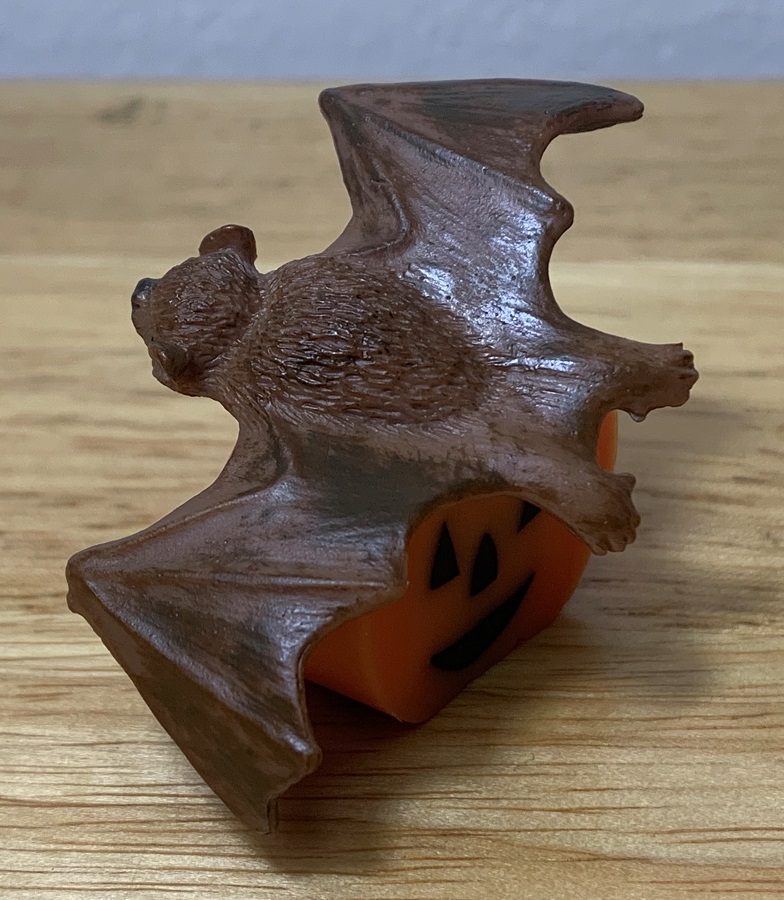
Bats as toys are quite common, but they’re almost all generic novelty toys and Halloween props. To find a toy bat that represents an actual species is a tricky endeavor. Thanks to Yowie group and their chocolate covered eggs however, we now have access to the southern bent-wing bat (Miniopterus orianae bassanii), one of two sub-species of the Australasian bent-wing bat. This figure is part of Yowie’s Animals with Superpowers series and is new for 2021.
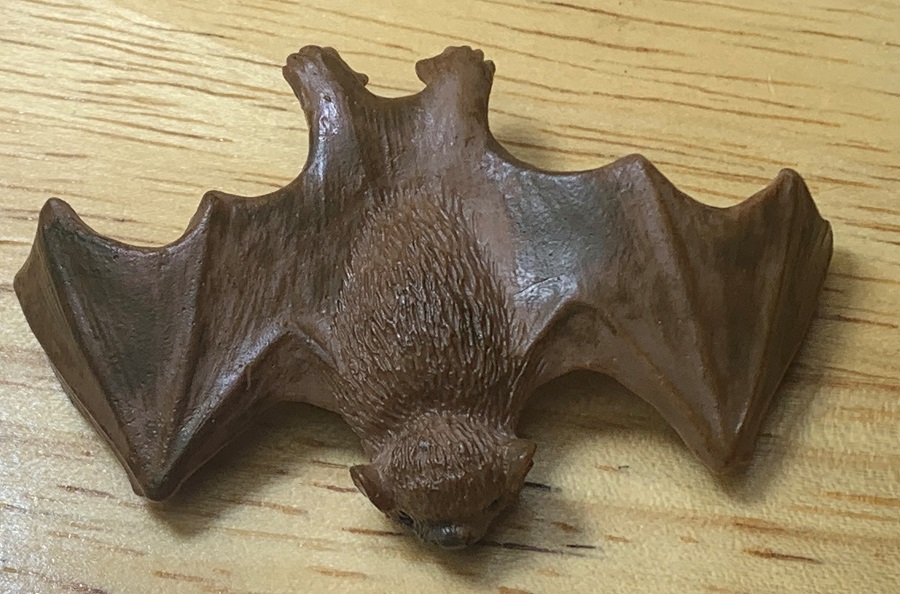
The southern bent-wing bat has a forearm length of 47.6mm while that of the toy measures 12.7mm, this puts the figure at about 1/3.7 in scale. Since it belongs to the Animals with Superpowers series, we can assume there’s something special about the creature. In this case it’s the bat’s ability to use ultrasonic calls to communicate with other bats, a feature that it shares with many bat species.
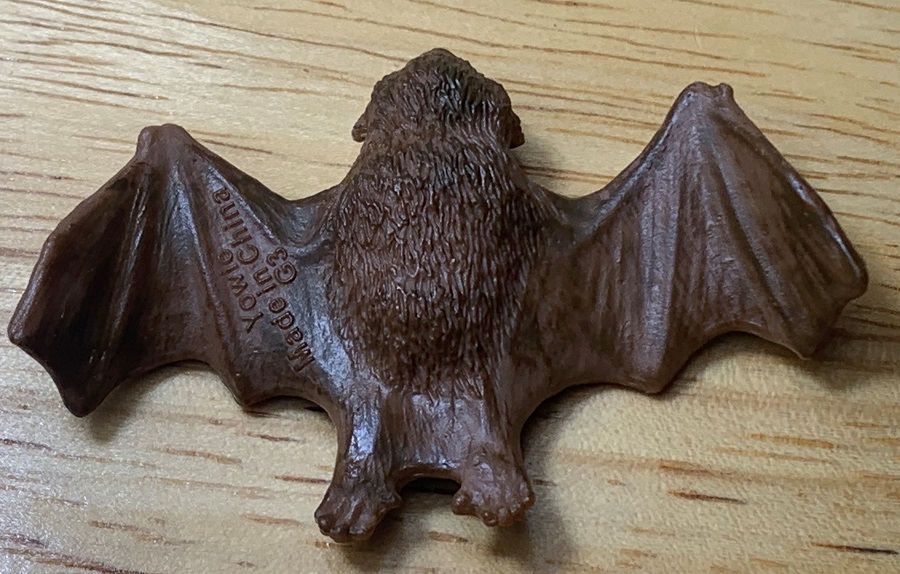
The southern bent-wing bat belongs to the Miniopteridae family, also known as the bent or long-winged bat family. They get the bent-wing name due to their ability to fold back their elongated 3rd finger when their wings are folded. This characteristic gives them particularly long wings, over twice the length of their bodies. I have to say, I don’t feel like the Yowie figure properly conveys just how long the wings should be, but it also has to fit inside of a plastic egg.
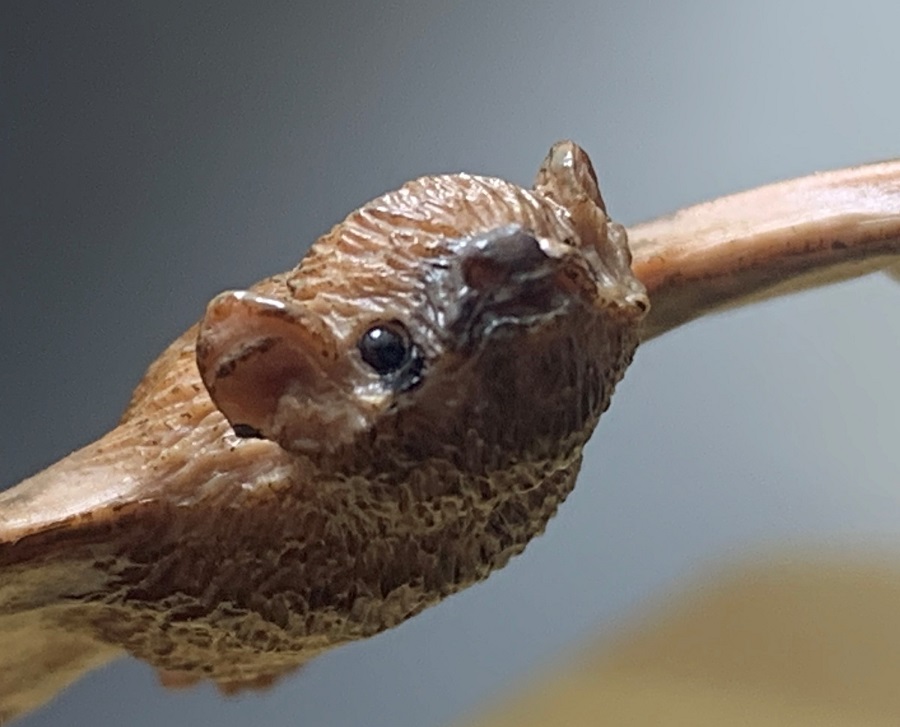
Aside from shortened wings this is a beautiful little figure. The body is appropriately fuzzy, and the wings appear leathery, complete with little grooves running down the membrane. Five little toes can be seen sculpted on the feet. The face is broad and short with pointed ears, a discernable little mouth, brown nose, and black beady eyes. The figure is mottled brown in color.
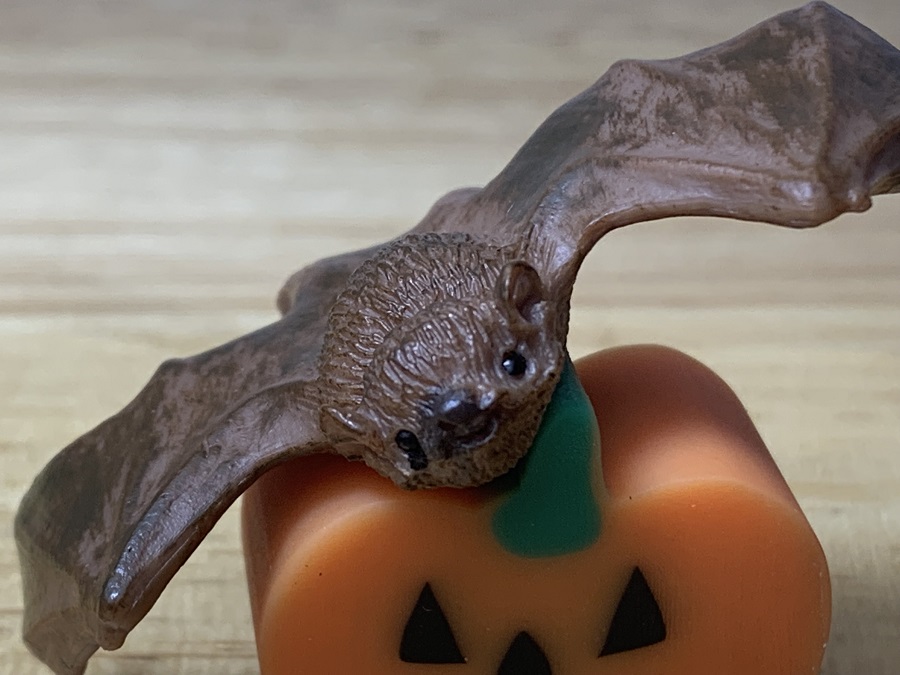
The southern bent-wing bat can be found in southern Australia but is considered critically endangered. The species to which it belongs can be found in Southeast Asia and the eastern coast of Australia. The species lives in caves along the coastal cliffs and feeds on night-flying insects.
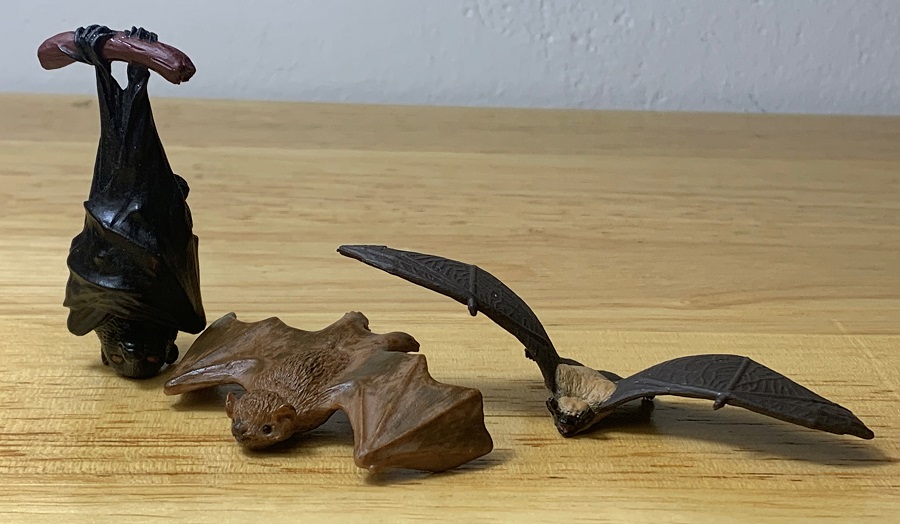
All in all, this is a delightful little toy of a species of bat I had never even heard of prior to collecting Yowies. It represents a highlight in my personal Yowie collection and I’m glad to share with the blog. Unfortunately, the southern bent-wing bat figure is listed as rare on the Yowie rarity chart. If the thrill of the hunt doesn’t excite you then you might have to track this one down using eBay.
Disclaimer: links to Ebay and Amazon on the AnimalToyBlog are affiliate links, so we make a small commission if you use them. Thanks for supporting us!




Nice! I should mention, it’s probably more common for bats to carry rabies, as they are the natural host for the virus. Most human cases don’t come from bats, because human-bat contact is not very common globally, but bats are the primary host and reservoir for this virus :).
I’m just going by what the CDC says, “Most bats don’t have rabies. For example, even among bats submitted for rabies testing because they could be captured, were obviously weak or sick, or had been captured by a cat, only about 6% had rabies.” Interestingly, according to the CDC, “There are usually only one or two human rabies cases each year in the United States, and the most common way for people to get rabies in the United States is through contact with a bat.”
https://www.cdc.gov/rabies/bats/education/index.html
ok I gotcha – surveillance data. When I was at the AZ PHL we didn’t have a high percentage of bats with rabies, but it was by far the most common group of animals with rabies.
But regardless, bats are the natural host (there is probably some level specificity on which bats are better reservoirs or vectors)